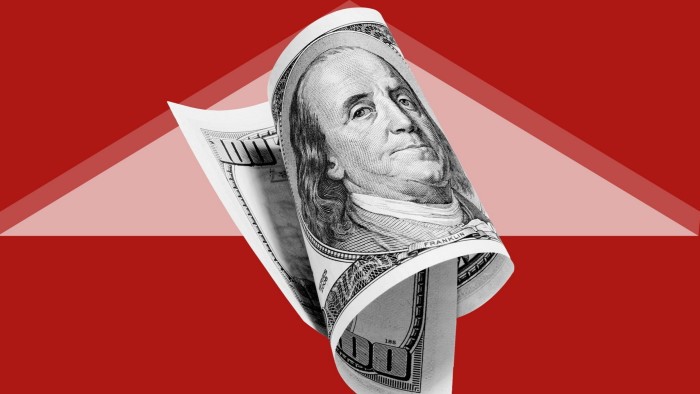Unlock the White House Watch newsletter for free
Your guide to what the 2024 US election means for Washington and the world
The US dollar rose on Tuesday after Donald Trump pledged to levy additional tariffs on imports from Canada, Mexico and China, reigniting concerns about his trade policies.
The dollar index, which tracks a basket of currencies including sterling and the yen, was up 0.4 per cent in early trading in London. The Mexican peso suffered the steepest drop, falling 1.3 per cent, while the Canadian dollar was down 0.8 per cent.
In a post on his social media site Truth Social late on Monday, the president-elect announced plans for an additional 10 per cent tariff on goods from China as well as a 25 per cent levy on “all products” from Mexico and Canada.
The announcement shows he is ready to move quickly on tariffs, said Jason Lui, head of Asia-Pacific equity and derivative strategy at BNP Paribas.
The pledge also reverberated across stock markets, with major European indices opening lower. The broad-based Stoxx Europe 600 fell 0.6 per cent, while the FTSE 100, Dax and Cac 40 also weakened.
While Trump only singled out China, Canada and Mexico, European companies that investors fear may be caught up in the fallout were down. Daimler Truck was the biggest faller in the Stoxx 600, dropping 4.7 per cent. Stellantis, Iveco, Renault and Volvo were also all down.
In Japan, the export-heavy Nikkei 225 closed down 0.9 per cent, led lower by semiconductor stocks, and Taiwan’s Taiex finished the day 1.2 per cent weaker.
Chinese stocks, however, shrugged off the news, while the renminbi fell 0.1 per cent against the dollar, as investors said the additional tariffs Trump proposed on Chinese imports were smaller than feared.
The mainland CSI 300 index of Shanghai- and Shenzhen-listed companies closed down 0.2 per cent.
Brian Arcese, a portfolio manager at Foord Asset Management in Singapore, said there was an element of “relief” in Chinese markets over the announcement, with the tariffs smaller than some expected.
“[It] is largely a function of the tariff proposal being 10 per cent and not 60 per cent . . . though we wouldn’t be surprised to see these numbers change over time,” he said.
Economists at Standard Chartered estimated that a 1 percentage point increase in US tariffs on China resulted in a 1.5 percentage point decline in Chinese exports to the US during Trump’s previous term.
“We estimate that a 10 per cent additional tariff on all imports from China would lead to a roughly 15 per cent decline in China’s exports to the US over the following 12 months, reducing China’s GDP growth by at most around 0.4-0.5 percentage points,” wrote Hunter Chan, Greater China economist at the bank.
The rebound in the dollar followed a drop on Monday when investors welcomed the nomination of Scott Bessent as Treasury secretary as a sign that the president-elect might water down some of his tariff plans.
On Monday “the market narrative was that the nomination of Scott Bessent [was of] someone who understood the market and could reduce the more extreme policy scenarios”, said Lui.
“But by including Canada and Mexico on day one, it may open the door to faster tariffs on other trading partners,” he added.
The yield on the 10-year US Treasury nudged up 0.03 percentage points to 4.29 per cent. Yields move inversely to prices.
https://www.ft.com/content/bebadd35-9f77-4e5c-8793-6de12eb496cf


